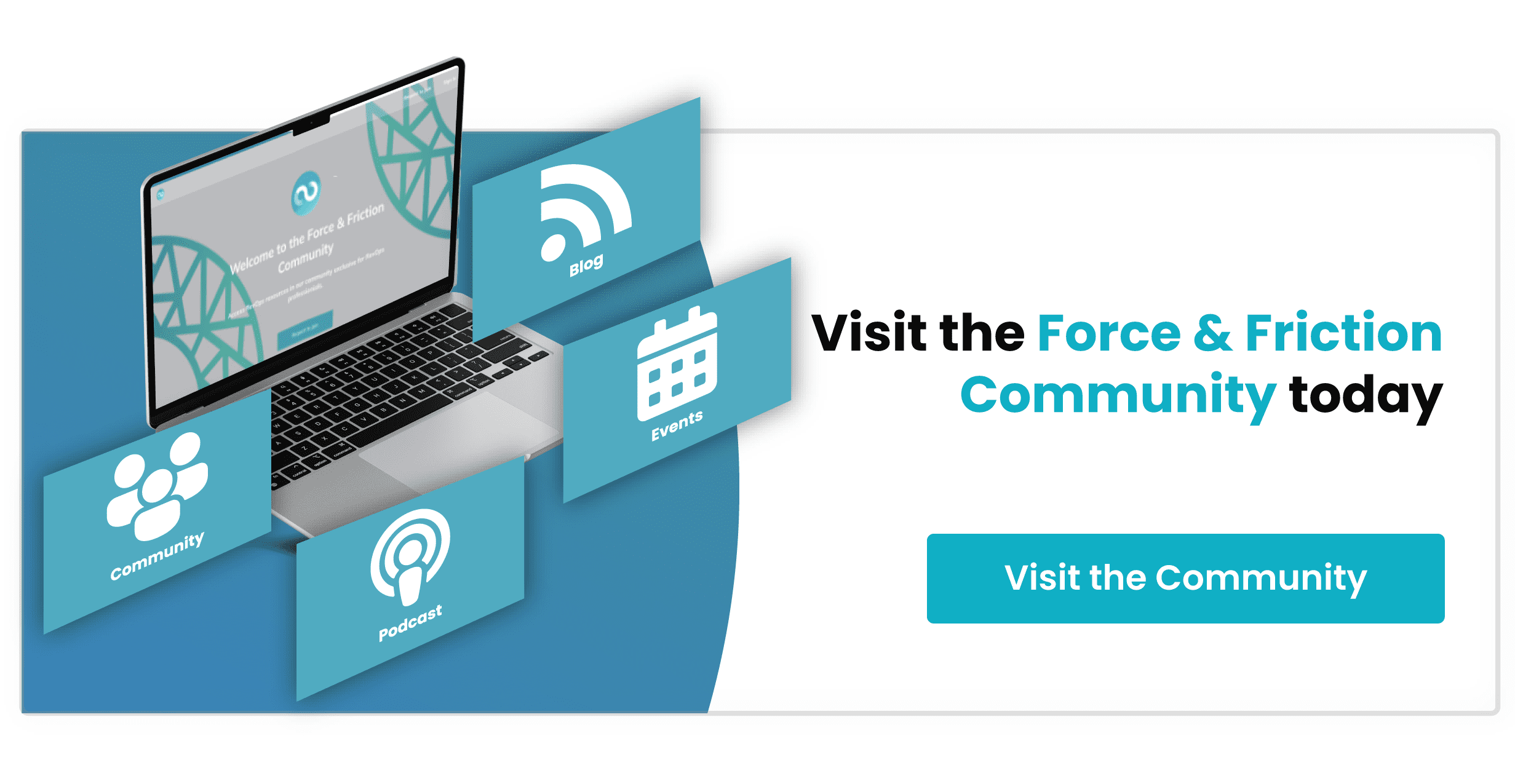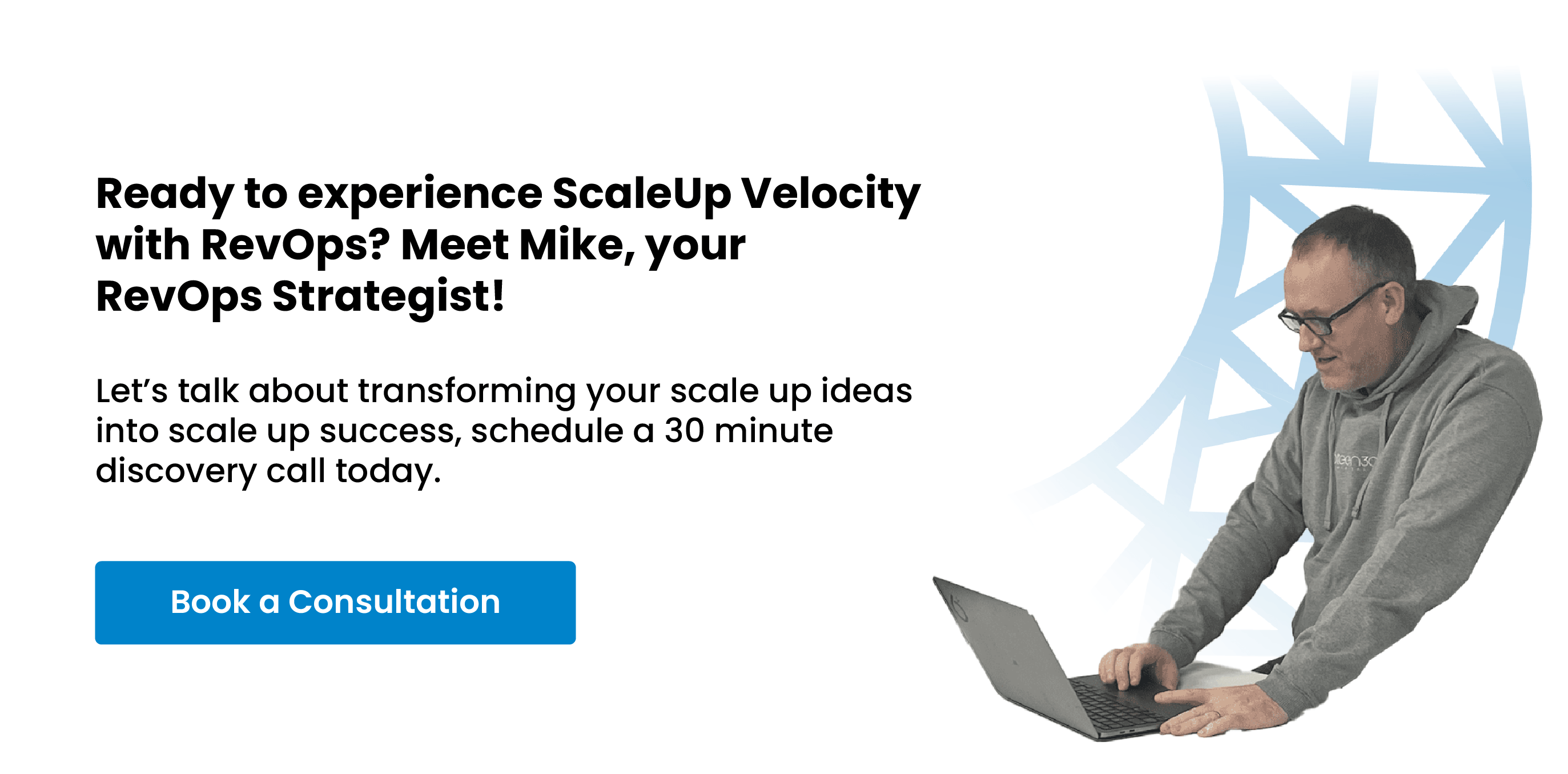
From Chaos to Cohesion: How Technology Enablement Can Optimize Your RevOps Strategy | #RevOpsLife
There is no debate that technology has revolutionized the way we operate our businesses, and therefore it is no surprise that it has a big influence in revenue operations.
In the context of RevOps strategy, technology enablement is a critical component that involves identifying and implementing the right technology solutions to support revenue operations.
This requires a comprehensive approach that looks beyond sales, marketing, and customer success and considers how technology can be used across the entire business.
In this latest #RevOpsLife article, I explore the ‘What’, ‘Why’, and ‘How’ of technology enablement you need to consider in your RevOps strategy, and I’ve provided some examples for implementing your tech stack.
The SaaS Organization Challenges Overview
I recently started a RevOps strategy for a SaaS company in Ireland that was struggling to scale its revenue operations.
While their SaaS solution for their clients was awesome, a strong challenger brand in its niche, their own internal systems and tech were somewhat cobbled together, siloed with outdated technology solutions that were no longer effective at the size they were already at, never mind capable of scaling up to meet their planned revenue growth uplift.
The situation was causing inefficiencies throughout the entire business model, not just their sales and onboarding.
CRM, Data & API Challenges
The CRM system was poorly set up, and bad data uncleaned and integrated through Zapier to other apps, instead of robust APIs that should have been coded up as opposed to using a 3rd party integration platform like Zapier.
At this point don’t get me wrong, we love Zapier, it's awesome, however for some business critical integrations, especially when there's an open API available my recommendation was that it should have been hooked up with a custom integration, over a zap.
Marketing Automation Challenges
Marketing automation wasn't really being used, abandoned carts and free demo expiry / upsells were only followed up lightly with a single or two follow-ups, and with no consistency that meant nurturing leads back effectively was poor and was costing them sales every week.
Customer Success Challenges
Additionally, the company's customer success team was struggling to keep up with the growing demand for support, as their ticketing system was not flowing data into their CRM and team confusion was rife, meaning a decline in customer satisfaction and they saw an increase in cancellations after 5 - 7 months - a critical time when peoples use of their software required additional support as they mapped the software to their clients wider use requirements.
Solution: HubSpot CRM Suite Professional:
We undertook an audit and implemented the HubSpot CRM Suite of applications and with a dynamic modern CRM system, marketing automation, sales enabled and a customer success platform, the SaaS company was able to streamline its revenue operations and provide better service to its customers.
From the first touch point of demo requests, nurturing through demo to decrease the amount of time clients had to wait to get time to value metrics better, and maximizing the free trial, meaning more free trials and demos converted to paying clients.
The sales team was able to qualify and close deals faster, using automated pipelines, while the marketing team was able to nurture leads more effectively, especially after cart abandonment, trials, and onboarding with managed SLAs implemented.
Additionally, the customer success team was able to manage customer onboarding and support more efficiently, with the ticket pipeline and CRM, aligned which resulted in faster and clearer communications resulting in higher customer satisfaction scores.
As a result, the company was able to solve its identified challenges from our friction finder workshops and start to scale its revenue operations - as we know it's never done, so there is still much work to be done, however by consolidating the tech, creating more robust APIs and solving for the customer, immediate benefits were made in less than 60 days of implementation.
RevOps is Organization (Not Department) Wide
RevOps is all about optimizing revenue operations across an organization, and technology plays a critical role in achieving this goal as we have seen in this SaaS organization's situation.
In the #RevOpsLife Series we have already covered the first three components of implementing a successful RevOps strategy, Read those first three articles here:
-
Unlocking Revenue Growth: How Alignment is Key to a Successful RevOps Strategy
-
From Insights to Action: Driving Revenue Growth with Effective Data and Analytics
-
From Inefficiency to Efficiency: The Benefits of Process Optimization in RevOps

Technology Enablement.
This approach involves identifying and implementing the right technology solutions to support revenue operations. While the focus is often on sales, marketing, and customer success technology, it's essential to look at how technology can be used across the entire business.
What Does Technology Enablement Mean In Your RevOps Strategy?
Think about technology enablement that involves using technology to support the revenue generation process across the entire business. This includes not just sales, marketing, and customer success, but also enterprise or finance systems, project management, and HR systems.
All systems that need to integrate, must integrate to allow smooth transitions from one stage of the funnel to another, ensuring that data flows seamlessly across the organization.
Why is Technology Enablement Important in Your RevOps Strategy?
There's an old saying and it's so true, that is you can't scale without people. However, technology enablement is critical for organizations looking to scale their revenue operations and support the increased headcount.
Inefficient and disparate systems as we experienced in the Irish SaaS organization above can lead to lost opportunities, increased costs, and poor customer experiences to say the basics out loud.
By implementing the right technology solutions such as HubSpot professional or Enterprise CRM suite and ensuring that they work seamlessly together, your organization can improve operational efficiency, increase revenue, and enhance the overall customer experience.
How You Can Enable Technology in Your RevOps Strategy?
1: Identify the Right Technology Solutions:
When it comes to identifying the right technology solutions, it's essential to consider the specific needs and goals of each department within the organization.
For example,
-
A finance department may benefit from implementing an enterprise resource planning (ERP) system
-
A project management team may need project management software such as Click Up, Teamwork, Asana, or Trello
It's also important to ensure that these systems are integrated with each other, as well as with sales, marketing, and customer success systems, to ensure a seamless flow of data across the organization.
You need to adopt a one-source-of-truth approach for your data and house that in your technology, such as the HubSpot CRM.
2: Integrate Systems:
Integration is critical in ensuring that data flows seamlessly across the organization, regardless of the system used. This involves using APIs and integrations to connect disparate systems, enabling them to work together in a coordinated manner.
For example,
-
Integrations between the HubSpot CRM system and your ERP system to ensure marketing automation leads generated from marketing campaigns are automatically added to the HubSpot CRM and the ERP system, making it easier for sales teams to follow up with them
3: Train Your Teams:
Training is crucial to ensure that team members can use technology solutions effectively. This involves not just sales, marketing, and customer success teams, but also those who use enterprise or finance systems, project management, and HR systems.
For example,
-
A finance team member who is using an ERP system for the first time may require additional training to understand how to input and analyze financial data effectively and how that data is visible or flows into the HubSpot CRM or other integrated applications
-
Assigning a training budget as part of each software application is a great idea to budget for upfront, so as your team scales and your salary run increases, ensure your training budget is a % of salary or the technology investment itself to avoid excuses that no budget is available
4: Monitor Performance:
Continuously monitoring system performance is crucial to ensure that the technology solutions are working as expected. This involves setting up KPIs to track performance and using analytics tools to gain insights into system usage and effectiveness.
For example,
-
A sales team may use the HubSpot Sales Hub and CRM system to track the number of deals closed
-
A marketing team may use the HubSpot Marketing Hubs automation platform to track the effectiveness of their campaigns
-
A customer success team may use the HubSpot Service Hub to manage tickets, create self-serve knowledge bases and NPS scores to improve service satisfaction and measure client health score
5: Continuously Improve:
Continuous improvement is essential to ensure that technology solutions continue to support revenue growth. This involves staying up-to-date with the latest technology trends and evaluating new solutions as they emerge.
For example,
-
A business may evaluate new CRM systems like HubSpot to determine if it offers better functionality than their current system.
-
Additionally, it's important to solicit feedback from team members to identify areas for improvement and ensure that the technology solutions are meeting their needs to enable them to do their jobs more efficiently
Conclusion:
Achieving technology enablement is a critical component of a successful RevOps strategy. By identifying and implementing the right technology solutions, integrating systems, training teams, monitoring performance, and continuously improving, organizations can optimize revenue operations across the entire business. This leads to improved efficiency, increased revenue, and enhanced customer experiences.
If you want to learn more about how to achieve a successful technology enablement implementation in your RevOps strategy, book a strategy session with one of our RevOps experts.
Our team will listen, learn and help you develop a customized strategy through our trusted process to define and implement your RevOps Strategic GamePlan that's tailored to your organization's unique needs, goals, and challenges
#RevOps #SalesOps #MarketingOps #CustomerSuccess #CRM #MarketingAutomation #Analytics #DataDriven #TechStack #DigitalTransformation






%20-%20Teal.png?width=500&height=130&name=Force%20%26%20Friction%20-%20Branding%20-%20Logo%20(White)%20-%20Teal.png)